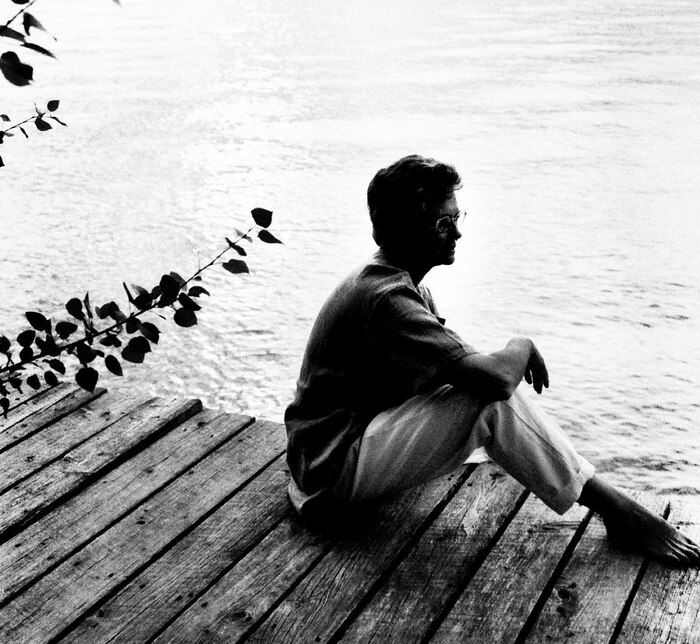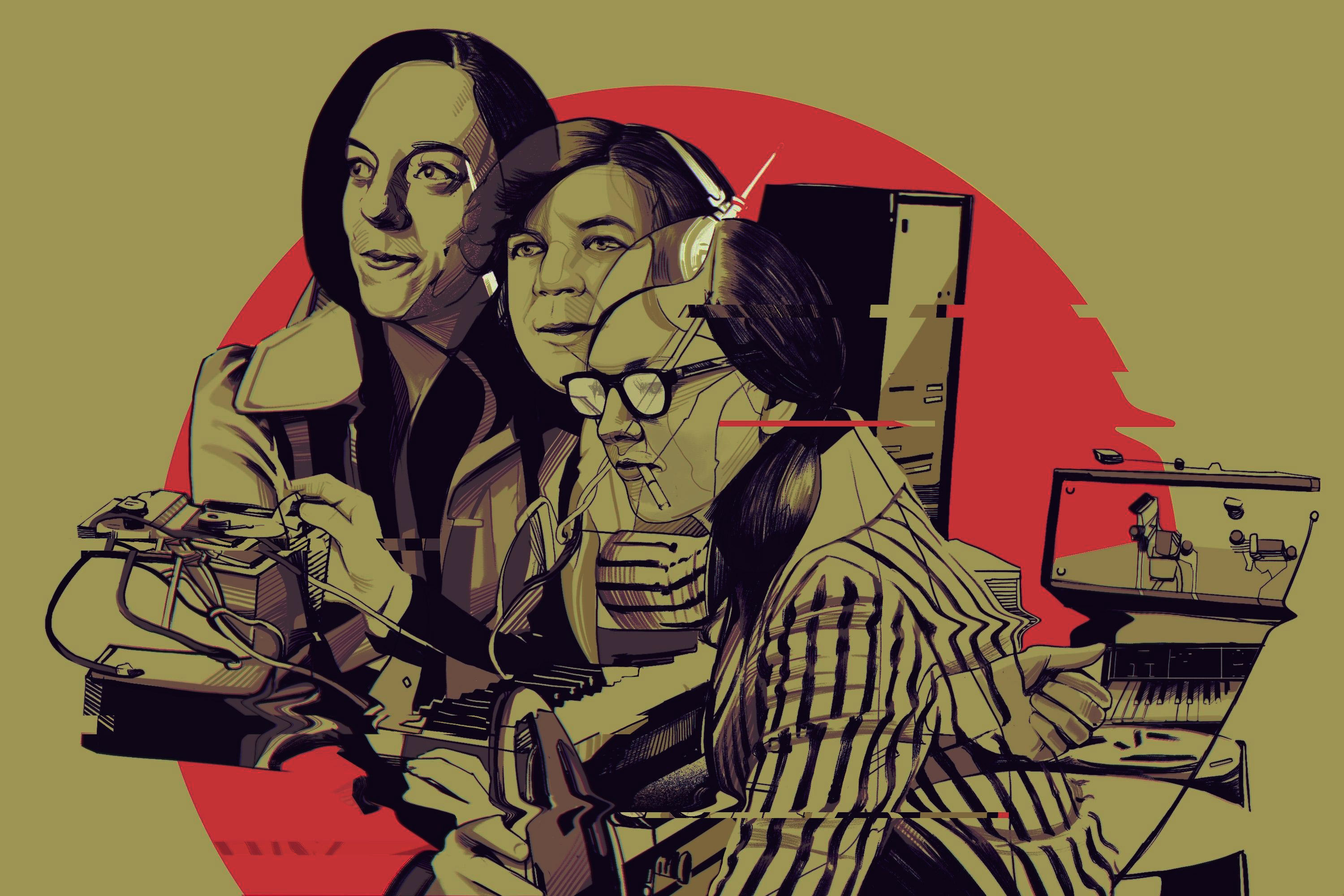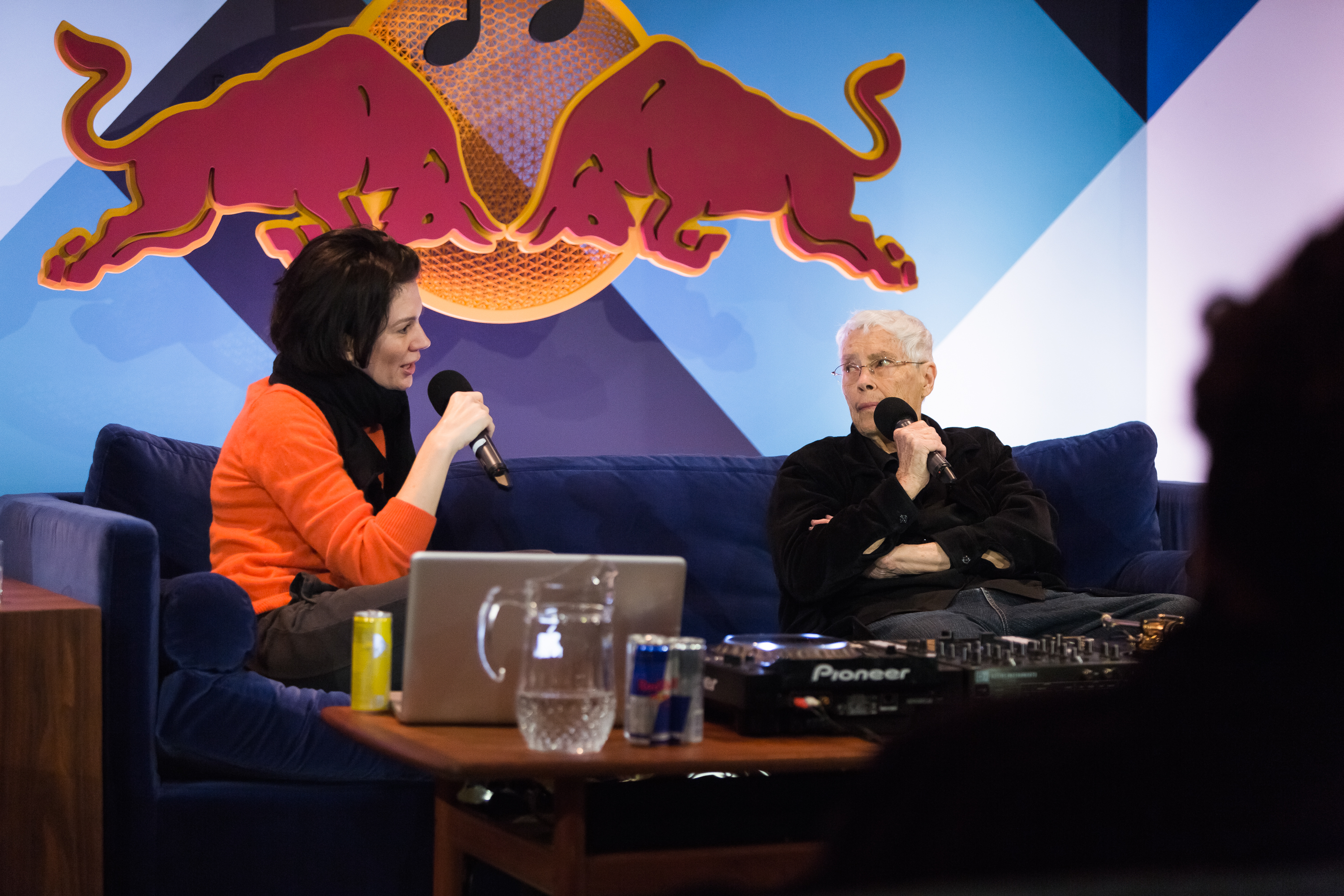The Sensual Sound Studies of Annea Lockwood
Burning pianos, rushing rivers, tiger purrs and more have featured in this pioneering composer’s work
The 78-year-old performance artist and tape music composer Annea Lockwood grew up at the end of the world, in Christchurch, New Zealand, where she was immersed in the power and interconnectedness of the wild forces of nature. As a young woman, Lockwood traveled to Europe to study classical composition, but ended up falling in with what became known as the Darmstadt School, where she began composing electronic music and experimental pieces. But instead of focusing on the particulars of wires and oscillators, Lockwood’s work would draw out the innate qualities of the natural world and the human experience.
Whether in her sound studies of rivers, recordings of conversations or dramatic stunts like burning a piano, Lockwood’s art is about listening deeply to what surrounds us. Recently, the composer reissued Tiger Balm, a sensual sound collage of tiger purrs, breaths, gongs and the drone of airplanes that was influenced by indigenous trance music and set the tone for much of her career. Sophie Weiner spoke to Lockwood about the experiences that formed her sensibility as an artist, her enduring interest in deep listening and what she’s learned in her half-century of composing avant-garde works.

When and how did you first become interested in sound art?
I started composing when I was around 12, since I had parents and a music teacher who much encouraged that. For the next eight to ten years I was composing for conventional instruments. But I got lucky. I went over to London when I was 21, and my composition teacher sent me off to Darmstadt [the experimental music school in Germany], which was the perfect move. In that period, 1963 or so, I was listening to everyone under the sun who was working in European experimental music. I fell in love with La Monte Young pushing furniture around the room and started studying electronic music with [Gottfried Michael] Koenig and kept going from then. I was doing electroacoustic composition, what we thought of then as mixed media, improv. I started working with glass and kept that up for a long time.
What ideas were you interested in exploring at that time?
I was interested in the idea that [artists] often work with sounds in a series, and with their interplay and overlay. That can obscure the actual intricate composition of one single sound. Any single sound is a beautiful little composition in itself, with its interior details, and if one could just focus on one sound at a time and begin to perceive that structure, it would be exciting. The structures revealed would be infinitely more complicated than anything I could think up myself.
What I really relish is the unexpected sounds which emerge from making the same action with the same materials.
Why did you begin working with glass? What was your intention with The Glass Concert series?
I turned to glass because it was an unfamiliar medium. I wanted to entice people into really listening intensively and move them past the process of, “Ah, that’s what’s making that sound. OK, so what’s going to happen next?” and into really listening. [I wanted] a deep immersion in the sounds themselves, for the audience.
I was doing these performances with my partner at the time, Harvey Matusow, and we did many of them – I think somewhere like 75 performances. One of the first performances in 1967 was at a place called Middle Earth in London, which was an experimental, alternative-everything scene, a great venue. We took it to New Zealand and it got a wonderfully mixed reception there. “Is this music?” kept popping up. I would say, “Yes.” People’s ears were pretty open at that point. People were looking for new directions to think in.
Was there a score for The Glass Concert that you performed every time you played the show or was it mainly improvisation?
There is a score. That score was published in Source: Music of the Avant-Garde. It’s a series of instructions as to which piece of glass to use and what initial movements you can make with it. Often the glass itself, as it began really vibrating, would produce sounds I hadn’t heard before. What I really relish is the unexpected sounds which emerge from making the same action with the same materials. Really new sounds can emerge, and you can suddenly realize, “Ah, it’s a slight variation in pressure.” That is a crucial part of the concert.
How did the piece transform as it was recorded and became The Glass World?
There was a South African producer, Michael Steyn, who was in London, and came to one of the early performances of The Glass Concert. He asked me if I’d be interested in recording it for his new label, Tangent. Of course I was. It was an ideal recording process. We spent something like the next two years working at night in a small, beautifully resonant little church in London where he set up his gear. We recorded at night, because of the quiet environment. We took two years because I kept performing The Glass Concert and finding new sounds and new ways to work with them, and Mike would say, “Oh, we’ve got to put that in!” So we kept on recording. He was a very fine audio engineer and a most interesting person. The process was like a Möbius strip: Working on the LP with Mike introduced new sounds into the performance piece and vice-versa. So eventually The Glass World was finished and edited and appeared.
Tell me about your memories of the Piano Transplant series.
It started with something I called Piano Transplant #1, a permanently prepared piano I did for fun because [John] Cage had never been able to permanently prepare one, for obvious reasons. I was able to insert all sorts of things into a little upright, including bamboo slippers which worked like a thumb piano in the soundboard, a little train that ran up and down a few of the bass strings and a whole lot of other things. One of the things I liked most about it was that when you pressed the soft pedal, bubbles came out of a mouth that I carved into the side. It was a lot of fun. Its repertoire was restricted to “Lili Marlene” when I had it because it sounded very honky-tonk. I gave it to Hugh Davies, who is a great British inventor-musician, and he played a particular Bach piece on it. When he died it went to Goldsmiths College, which recently did an event with it.
The next one was the Piano Burning, which was done in order to record good fire sounds for a dance score I was contemplating doing with Richard Alston, a British choreographer. I tried recording bonfires but none of the sounds I recorded were sufficiently powerful, so I thought I might record something that was really sonically interesting. I knew about a piano graveyard in London where defunct pianos that people wanted to get rid of were dumped. I had a few of them carted to a festival on the Chelsea Embankment and set one of them on fire with an old microphone inside it (wrapped in asbestos so it would last as long as possible), and ran it out to a little reel-to-reel tape recorder. A crowd, of course, gathered around, and what we ended up with on the tape was some good piano sound overlaid with a lot of crowd chatter, so it was useless, but funny. And beautiful to look at.
The other transplants evolved from that series. I have a playful side. I love surreal juxtapositions. A piano in a pond was a beautiful, strange juxtaposition. It was a very shallow pond in Texas. It was playable up to five years after we inserted it – you could get some sound out of it. It’s probably still standing.
As you re-release Tiger Balm, can you remember what it was like when it was first performed?
It was 1970 when it came out in Source magazine. I would have been working on it and performing it in ’69. It started out as a performance piece. It incorporated live sound, blowing through blades of grass, somebody running in a relaxed fashion on a dusty wooden floor and other performed sounds along with the tape, which has become what Tiger Balm is known as now.
Where did your inspiration for the piece come from?
Tiger Balm really stemmed from my realization that as musicians we are placing sound into people’s bodies. Bodies receive sound in multiple ways, in different organs. We’re much affected by it. I started asking myself, “Well, if we know we’re affecting people strongly with the sound we project, shouldn’t we know how we’re doing it, what sounds affect people in which ways?” Take some responsibility for it.
That aspect of things got me looking into sound and physiology, and that took me into looking into traditional trance music, music that’s designed to help people involved in ritual, or shamans, slip into trance. I got really interested in that whole field. I was doing a series for the BBC on trance rituals and ceremonies, based on their enormous ethnic archive.
Of course, then it became part of my own work. I was proposing with Tiger Balm that we have atavistic memories of sounds which are powerful and which have been associated with rituals and ceremonies which we no longer remember. But they’re there, to stir, or to rediscover in our systems and re-evoke. I started thinking about sounds which for me are erotic, and making a vocabulary of such sounds. Little by little, out of all of these investigations, Tiger Balm emerged.
You’ve focused a lot in your career on natural settings, particularly rivers. What is it about the sounds in those settings that interest you, and specifically the sound of water?
Water has a deep childhood resonance for me. I’m a New Zealander and I grew up with wild rivers. I was drawn by the power of those rivers to change course rapidly and unexpectedly. I really got into working with environmental sounds via [musique] concrète sounds, I studied electronic music when I was 24 in Germany, from Michael [Koenig], who was a wonderful teacher. We were spending hours in a studio compiling various waveforms on oscillators, and ring modulating them and filtering them. The sounds we produced struck me as really inert in the end. Interesting to the brain, but not to my ears. I started looking around for sounds from other sources. Glass made wonderful sounds. But environmental sounds were also really interesting to my ears. I find their acoustic structures really intricate and complex in ways that I could never think up myself. Often unpredictable. I like unpredictability.
What is a river? What is a river’s nature? I was looking at rivers as autonomous entities and wanted to probe that.
What did you learn in the process of documenting these rivers?
With the Danube, the learning process was really obvious and strong. I started the Danube project with a question to myself: What is a river? What is a river’s nature? I was looking at rivers as autonomous entities and wanted to probe that. By the time I’d got myself down to the Balkans, I was more aware than I’d been with the Hudson of how a river shapes its sound. It’s not happenstance. They are of course completely attached to the current, flow, weather conditions and the materials from which a river’s banks are created. I had an experience down in Rasova, in Romania, of recording an amazing series of sounds coming from the water’s actions against a muddy bank, which the water had carved into an almost complete tunnel. The water would slush up into this curved bank and hit both sides of the curve and resonate wonderfully.
That experience really crystallized what I’d be slowly realizing – of course the river shapes its own sounds, just by the way it shapes its banks. And as I kept going further east and finally got to the delta and down to the Black Sea, I was realizing how extensively a river shapes its entire environment. Human environments, insect environments above and below water, animal environments, plant environments. Everything you can think of. This natural element is enormously creative on a huge scale, and everything is integrated, which is one of the most beautiful aspects of it to me. The river showed me that, absolutely clearly, and I’ve been grateful for it ever since. That recognition of interconnection and integration in the national world, which one reads about and one acknowledges, but recognizing it in one’s body, through my ears, was really lovely.
You’ve used a lot of recorded conversations in your work. What is interesting to you about these recordings?
It comes from my interest in people, people’s openness. When I came to the States, it was extraordinary to me how, contrasted with the communities I lived in – even in London, even in experimental circles – how open Americans are. This was amazing and initially intimidating. I became increasingly interested in how people are willing to show really intrinsic and important parts of themselves, of their beings, to share those parts of their being with others. I find that moving. It’s a beautiful generosity, that willingness to share.
I became increasingly interested in memory per se, in how people’s voices change and the rhythm of the voice changes, the pitch of a voice changes, the phraseology sometimes changes, when someone is actively remembering. Especially if they do it in a way that’s almost unconscious, so they’re barely aware of speaking. But the intimacy of the recollection, the way that comes through the voice can be really beautiful.
Looking back at this point in your career, is there anything that stands out to you as something that you feel proudest of or is the most meaningful to you?
I think it would be The Glass Concert. Because with The Glass Concert I changed my way of hearing and listening. It was a wild curve. I changed my way of conceptualizing music and sound. The sound world just completely opened up for me. It was radical. It was a wonderful and enlightening shift.

